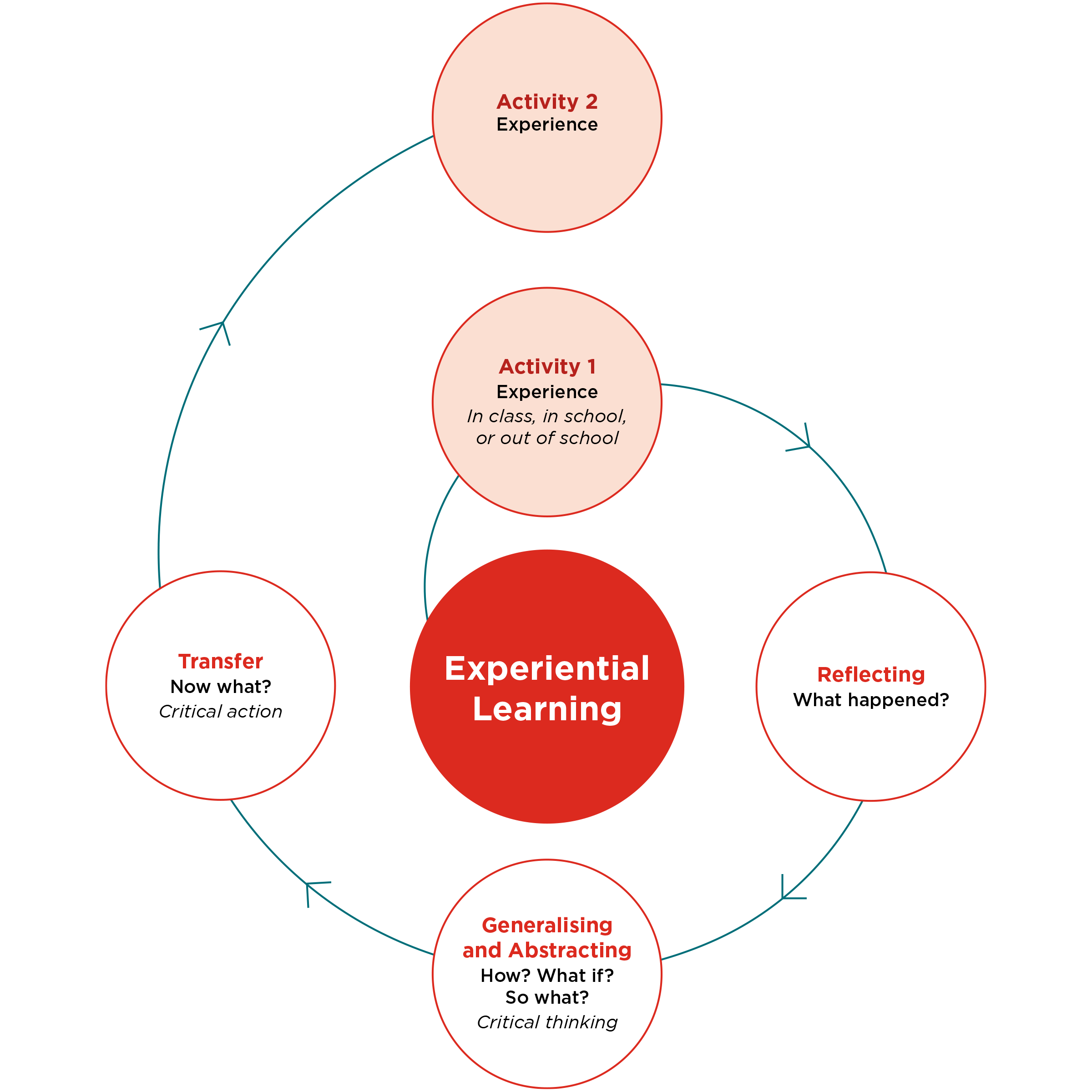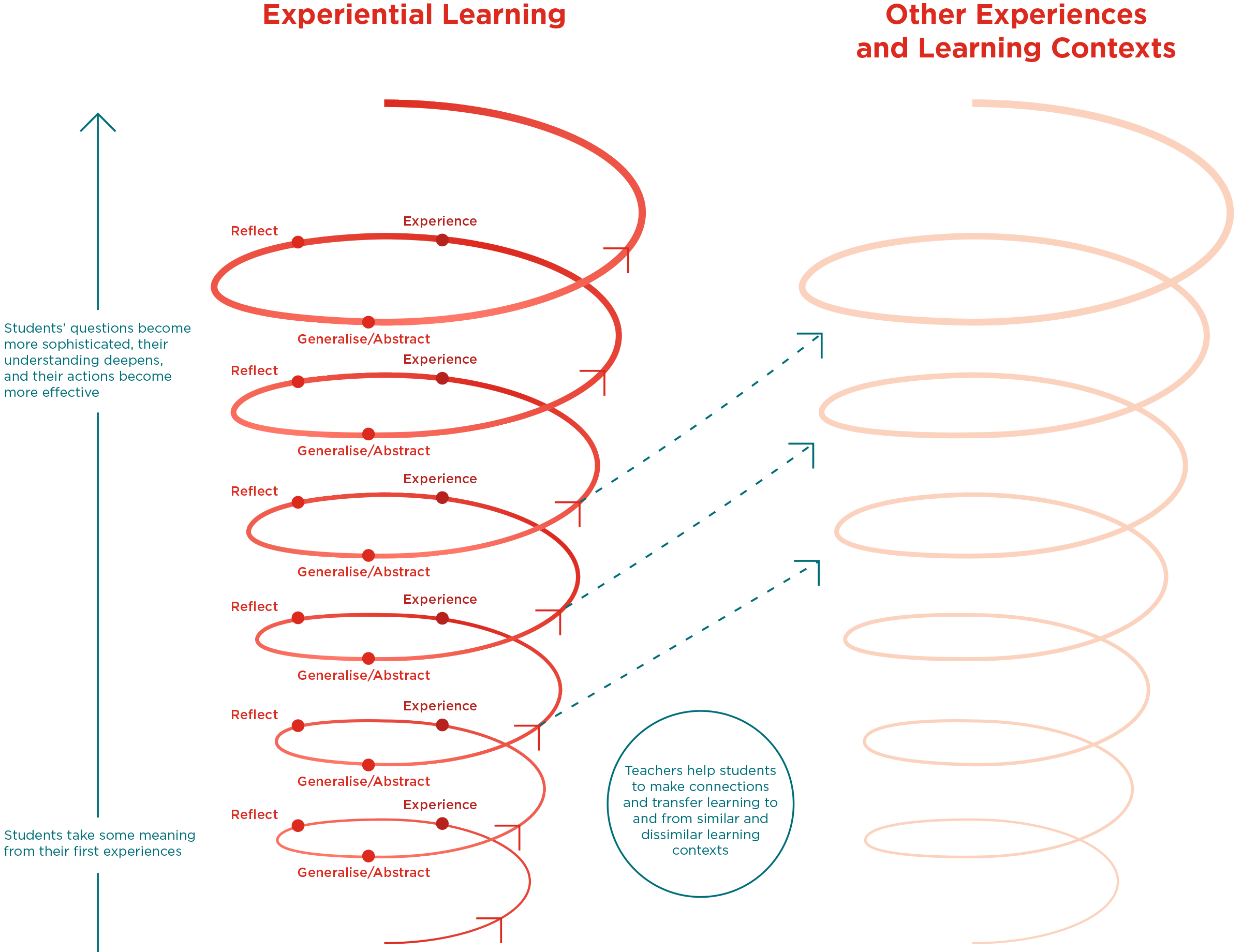Experiential learning cycle
An experiential approach
An experiential learning approach enhances personal growth through effective participation and experiences. Ākonga work to solve movement and activity problems both individually and within groups and teams.
Rather than the teacher providing information, ākonga are encouraged to generate information themselves as they progress through a planned sequence called the experiential learning cycle. The sequence involves carrying out actions, observing and reflecting on the effects of those actions, applying this understanding to new circumstances, and ultimately generalising their findings and transferring them to other aspects of their lives. A crucial element of the process is de-briefing or processing the experience through self-reflection and peer feedback.
The experiential learning cycle can be applied to all activities where students learn through doing. Kaiako observe their students closely during each session and identify the gaps in their knowledge base or skills, and adjust the activity and their own teaching accordingly.
Experiential learning is described as a four-phase cycle.
- Kaiako select one or more activities (experiences) in order to demonstrate a concept or raise questions. The experience should enable ākonga to engage with the topic or physical challenge in as many ways as possible.
- In the reflection phase, ākonga query and review what they have done. The focus is on facts, so ākonga should ask questions that begin with 'what'. As they examine different answers, they develop skills for critical thinking.
- In the generalising and abstracting phase, ākonga are able to examine the experience at a deeper level. They think about the meaning of the factual information they gathered from the questions they used in the reflecting phase. Students are encouraged to examine abstract concepts and make connections between ideas and their actual experience. They also look at what they have learned and hypothesise about where to go next. Learners ask 'how', 'what if', and 'so what' questions.
- The transfer phase is when students begin to apply the knowledge they have gained to the next activity or to their daily lives. They should use questions that begin with 'now what'. At this stage, students may go on to take critical action. (Henton, 1996)
The experiential learning cycle and critical thinking
The experiential learning cycle encourages learners to think deeply, develop critical-thinking skills, and transfer their learning into action through successive phases of the cycle. The learning cycle may develop into a spiral. Ākonga revisit the phases, and their conceptual understandings and strategies for change are developed further each time. They discover more about both the practical limits and the wider applications of their new knowledge as they begin to take what they learned in one situation and use it in another, demonstrating what they have learned.
The experiential learning cycle can provide ākonga with the opportunity to:
- participate in sequenced games and activities aimed at improving individual self-concept and self-efficacy
- build on experience and deepen their understanding of socio-ecological and health promotion concepts; both kaiako and ākonga ask increasingly sophisticated questions as they gain expertise
- develop their critical-thinking skills as they move through and repeat the phases
- develop decision-making and problem-solving ability in physical activities
- develop interpersonal and cooperative skills through trust and competent behaviour.
Example
Adventure based learning (ABL) is a form of experiential learning frequently used in New Zealand schools. Elements of adventure based learning that can be included in activities across physical education and sport studies experiences are:
- trust-building
- goal-setting
- challenge/stress
- peak experiences
- humour/fun
- problem-solving.

